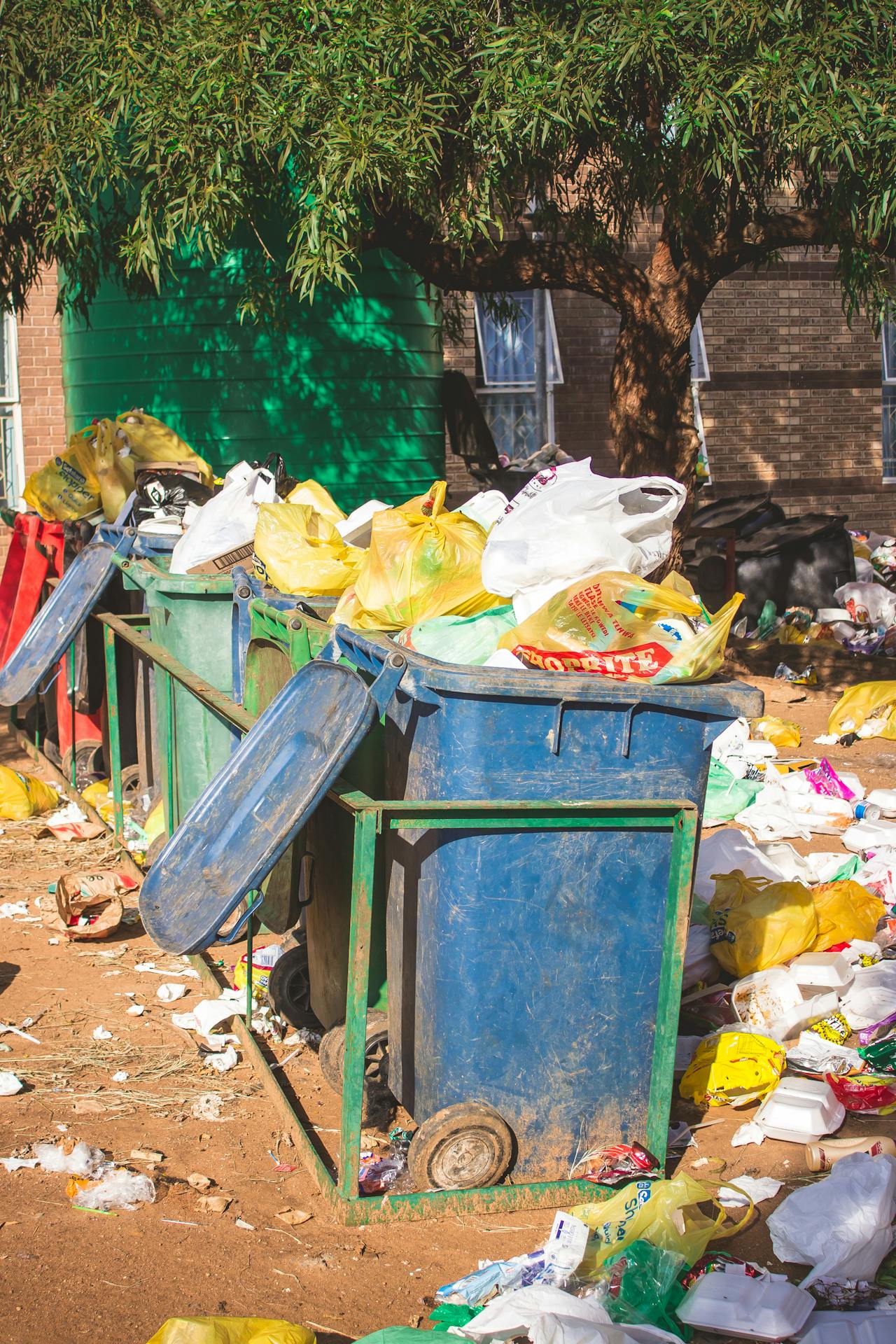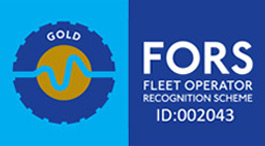Back to Listing
The Different Types of Roll On/Off Containers

And Their Uses in Modern Logistics
Roll on/off containers are versatile tools for transporting various types of goods. These containers come in different designs to suit specific needs, making them ideal for industries like construction, shipping, and waste management. Understanding the types of roll on/off containers can help you choose the right one for your requirements.
You might encounter flat-rack containers, which are useful for oversized cargo, or skip containers, perfect for waste disposal. Each type has its own advantages and is designed to handle different kinds of materials. Learning about these options can enhance your logistics and efficiency.
In this article, you will explore the most common types of roll on/off containers and their practical uses. Knowing what each container offers will give you the insight needed to make informed decisions for your business or personal projects.
Overview of Roll On/Off Containers
Roll on/off containers are specially designed for transporting goods. They facilitate loading and unloading on and off transport vehicles with ease. Understanding their definition and key features can help you appreciate their benefits.
Defining Roll On/Off Containers
Roll on/off containers, also known as RoRo containers, are large shipping units used for transporting vehicles and heavy cargo. They have a unique design allowing them to roll onto and off ships, flatbed trucks, or railway platforms. This feature eliminates the need for cranes, making the loading process quicker.
These containers come in various shapes and sizes, catering to different needs. They are most commonly used for cars, boats, and machinery. Some RoRo containers are equipped with ramps to aid in the rolling process. Understanding their purpose makes it easier to see their importance in logistics.
Characteristics and Design Features
Roll on/off containers are designed with specific features to ensure they are practical and safe. They typically include a strong steel frame, durable flooring, and multiple tie-down points. These design elements help secure cargo during transportation.
Many RoRo containers also offer weatherproofing and anti-corrosion treatments. This protection keeps your cargo safe from harsh weather and environmental factors.
Key Features:
- Ramps: Allow vehicles to drive on and off easily.
- Multiple Sizes: Adapt to various types of cargo.
- Secure Fastenings: Help keep your load stable.
With these characteristics, roll on/off containers provide a reliable solution for transporting heavy items efficiently.
Common Types of Roll On/Off Containers
Roll on/off containers come in several types, each designed for specific uses. Understanding these types helps you choose the right container for your needs.
Open Top Containers
Open top containers are designed to allow easy loading from above. This feature is ideal for materials that are too tall or bulky for standard containers.
You often see these containers in construction sites or for transporting heavy machinery.
Key Points:
- Accessible Loading: Allows loading using cranes or other lifting equipment.
- Versatile Use: Great for oversized items or for use in construction, demolition, or recycling.
The sides of these containers are typically strong, but the lack of a roof means they are not suitable for weather-sensitive materials.
Closed Containers
Closed containers provide complete enclosure for the contents. They are often used for transporting items that need protection from the elements or theft.
These containers are perfect for transporting machinery, tools, or sensitive goods.
Key Points:
- Enhanced Security: Protects cargo from theft or damage.
- Weather Resistance: Safeguards items from rain, winds, and other environmental factors.
Commonly made from durable steel, closed containers often come with lockable doors for added security.
Compactor Containers
Compactor containers are specifically designed for waste management. They have built-in compacting mechanisms that allow you to reduce the volume of waste.
This feature is particularly useful in industries generating large amounts of waste, such as construction, manufacturing, or retail.
Key Points:
- Space Efficiency: Reduces the amount of space waste takes up.
- Cost-Effective: Fewer trips to dispose of waste can lower costs.
Using compactor containers helps to manage waste more efficiently while ensuring safety and cleanliness in your operation.
Specialised Roll On/Off Containers
Specialised roll on/off containers are designed for specific purposes. They meet the needs of particular industries and waste types, providing safe and efficient solutions for handling materials. Here are some key categories of these containers.
Hazardous Waste Containers
Hazardous waste containers are built to safely transport dangerous materials. These containers often have reinforced structures and special features to prevent leaks.
Key characteristics include:
- Leak-proof design: Ensures that no harmful substances escape.
- Warning labels: Clearly indicate the type of waste inside.
- Specific size options: Available in various capacities to meet different needs.
These containers are used in industries dealing with chemicals, batteries, or contaminated materials. Proper handling and usage are crucial to protect workers and the environment.
Recycling Containers
Recycling containers focus on collecting materials that can be recycled. They are used for a range of items, including paper, plastics, and metals.
Features often found in these containers are:
- Colour coding: Helps users easily identify which materials go where.
- Easy access: Designed for quick loading and unloading of recyclables.
- Durable construction: Built to withstand frequent use and various weather conditions.
By using these specialised containers, you contribute to efficient recycling processes, helping to reduce waste in landfills.
Bulk Item Containers
Bulk item containers are ideal for transporting large items that do not fit in standard containers. These include oversized machinery, furniture, and construction materials.
Important aspects include:
- Large capacity: Designed to hold hefty items securely.
- Flexible designs: Many come with adjustable sides or removable parts.
- Sturdy materials: Made to endure heavy loads without damage.
These containers are often used by construction companies, moving firms, and warehouses. They simplify the movement of bulk goods, making logistics easier and more efficient.
Industries and Applications
Roll on/roll off containers serve various industries, each with specific needs. These containers assist in transporting materials efficiently, helping businesses streamline their operations.
Construction and Demolition
In the construction and demolition industry, roll on/roll off containers are crucial. They are used to transport heavy equipment and large quantities of waste materials. You can find containers specifically designed for rubble, metals, and other construction debris.
Containers come in different sizes, allowing you to choose the best fit for your project. Using these containers can help reduce clutter on-site, keeping work areas safe and organised. Regular collection of full containers ensures compliance with local regulations regarding waste disposal.
Waste Management and Recycling
Roll on/roll off containers play a significant role in waste management and recycling. They make it easier to collect and transport various types of waste, from household rubbish to recyclable materials. You can find containers suitable for hazardous waste, green waste, and more.
By using these containers, you support efficient sorting and recycling processes. Waste collection companies benefit from the ease of loading and unloading. This helps them manage waste more effectively and contribute to a cleaner environment.
Manufacturing and Industrial
In manufacturing and industrial settings, roll on/roll off containers are used for moving raw materials and finished products. These containers facilitate internal transport and storage, ensuring smooth operations. You can use them to transport bulk items like metals, plastics, or textiles.
The containers help maintain a clean workspace by providing a designated area for waste and unused materials. This efficiency boosts productivity and improves safety for workers. Many manufacturers rely on these containers for seamless supply chain management.
Capacity and Dimensions
When choosing roll on/roll off containers, knowing their capacity and dimensions is essential. This information helps you make informed decisions based on your needs.
Standard Sizes and Load Limits
Roll on/roll off containers come in various standard sizes. Common dimensions include:
- 20-foot container: Approx. 6.06m long, with a capacity of 33 cubic metres.
- 40-foot container: Approx. 12.19m long, holding about 67 cubic metres.
- 45-foot container: Approx. 13.72m long, offering 76 cubic metres of space.
Load limits can vary by design and regulation. For instance, a 40-foot container generally accommodates a maximum weight of 30,480 kg. It's vital to check the specific weight limit for your container type, as exceeding this can cause safety issues.
Selecting the Appropriate Capacity
When you select a container, consider the types of goods you plan to transport. For heavier items, choose a container with a higher load limit, even if it means sacrificing some space.
Consider how you will load and unload the items. If you have bulky goods, a larger container might be necessary. Also think about storage needs. Always allow a bit of extra space to accommodate any unexpected items or shifting during transit.
By assessing both the load and dimensions, you will make the best choice for your transport needs.
Safety and Regulatory Compliance
Ensuring safety and meeting regulatory requirements are vital when using roll on/roll off (RoRo) containers. Proper handling and transportation techniques, along with adherence to environmental regulations, play a crucial role in minimising risks and promoting compliance.
Safe Handling and Transportation
When handling RoRo containers, following safety protocols is essential. Always wear appropriate personal protective equipment (PPE), such as gloves, hard hats, and safety shoes. Ensure the area is clear of hazards before loading or unloading.
Use machinery that is well-maintained and suitable for the task. Conduct regular inspections to check for any mechanical issues. When towing RoRo containers, keep speed within limits and maintain a safe distance from other vehicles.
Training staff in safe handling techniques can reduce accidents. Encourage clear communication among team members during operations to ensure that everyone understands their responsibilities.
Compliance with Environmental Regulations
It’s important to comply with environmental regulations when using RoRo containers. Check for specific local laws regarding waste management and disposal.
RoRo containers often transport materials that could harm the environment. Follow guidelines for the secure containerisation of hazardous materials. This includes proper labelling, securing cargo, and ensuring that containers are leak-proof.
Conduct regular audits to ensure compliance with environmental standards. Keeping records of inspections and maintenance helps you demonstrate adherence to regulations if required. Remaining informed about changes in legislation is essential for ongoing compliance.
Maintenance and Upkeep of Containers
Proper maintenance and upkeep are essential for ensuring that roll on/roll off containers remain functional and safe. Regular attention to cleaning and repairs can prolong the life of your containers and keep them in top condition.
Cleaning Protocols
Regular cleaning is important for keeping containers in good shape. Dust, dirt, and debris can accumulate, potentially leading to corrosion or other damage.
-
Frequency: Aim to clean your containers at least once a month or more often if they're used heavily.
-
Procedure:
- Use a pressure washer to remove heavy grime.
- Apply a mild detergent to clean the surfaces and scrub any stubborn stains.
- Rinse with clean water and allow to dry completely.
-
Inspection: After cleaning, check for any signs of damage, such as rust or dents. Address these issues promptly to avoid larger problems later.
Repair and Refurbishment
Your containers might need repairs over time due to wear and tear. Addressing these issues quickly can save you money and time.
-
Common Repairs: Look out for:
- Rust patches: Treat and repaint to prevent further corrosion.
- Damaged doors: Ensure they open and close properly. Replace hinges if needed.
-
Refurbishment: If a container is heavily worn, consider refurbishment.
- This may involve repainting, replacing panels, or upgrading features.
- Professional services can ensure your container meets current safety standards.
-
Regular Inspection: Schedule inspections every few months. This helps catch problems early before they escalate into costly repairs.
Frequently Asked Questions
You may have questions about roll on/off containers and their uses. Here are some common questions and clear answers to help you understand these containers better.
What are the primary distinctions between various roll on/off containers?
Roll on/off containers vary in size, shape, and design. Some are open-topped for easy loading, while others are enclosed for security. The material and weight capacity also differ, impacting how they can be used.
Can you explain the typical uses for different roll on/off container sizes?
Smaller roll on/off containers are often used for light loads, such as household waste. Medium-sized containers work well for commercial use, such as office clean-outs. Larger containers are suitable for construction sites and heavy materials.
How do open-top and enclosed roll on/off containers differ in application?
Open-top containers are great for bulky items and easy loading. You can throw in large pieces without hassle. Enclosed containers protect waste from weather and theft, making them better for valuable materials.
What considerations should be taken into account when selecting a roll on/off container for construction waste?
When selecting a container, consider the size of the waste and weight limits. You should also think about the location and access for trucks. Additionally, check local regulations on what can be disposed of in the container.
In what scenarios are lockable roll on/off containers recommended?
Lockable containers are recommended when you need to secure valuable materials. They are useful for construction sites where theft might be a concern. These containers ensure that only authorised personnel can access the contents.
How do environmental regulations impact the use of roll on/off containers for waste management?
Environmental regulations can dictate how waste must be stored and disposed of. You may need to use specific containers for hazardous materials. Being aware of these rules helps ensure compliance and promotes responsible waste management.
Tailored Waste Management Solutions: Sharp Skips specialises in skip hire, wheelie bin hire, and grab loader services, offering customised waste disposal options in London and Essex. Let our experts assist you in choosing the right service for your project. Reach out now for a personalised quote.







